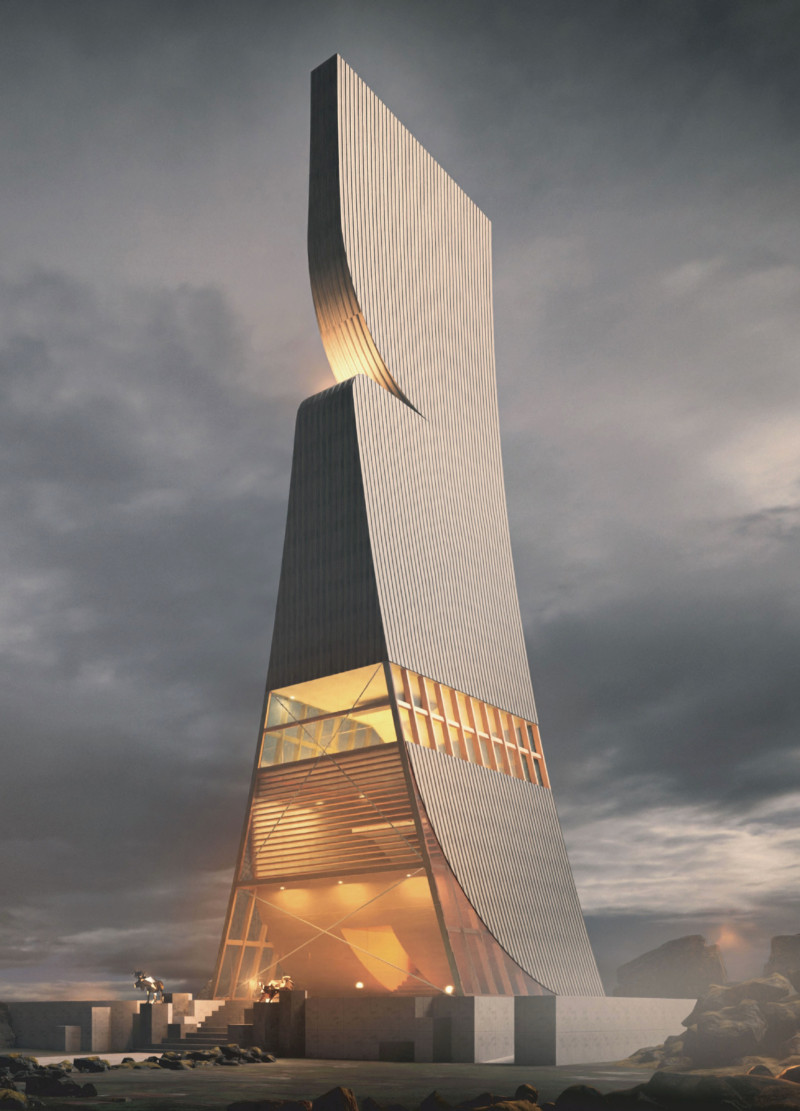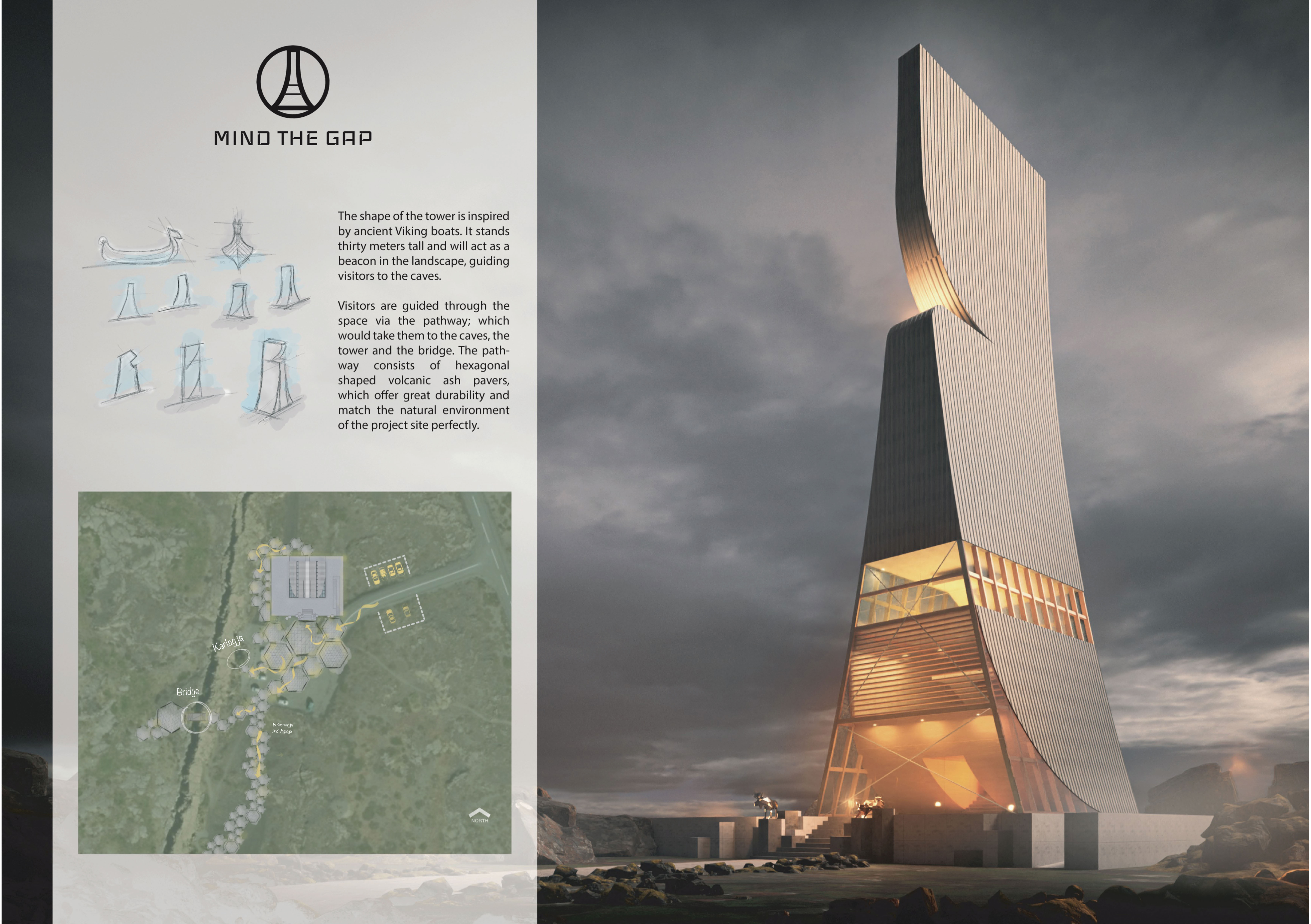5 key facts about this project
The design features a tower inspired by ancient Viking boats, prominently positioned to act as a beacon in the landscape. Standing at thirty meters high, the structure directs visitors toward various attractions, including caves nearby. A pathway made from hexagonal volcanic ash pavers enhances the experience, providing a durable and visually suitable link to the natural setting.
Design Features
At the entrance, statues represent the continents of North America and Europe. A Bull symbolizes Europe, while a Canadian Moose represents North America. These figures make visitors think about the geographical and cultural connections between the continents. As people approach the tower, these elements encourage a deeper engagement with the site’s themes.
Functional Spaces
The design incorporates spaces that prioritize accessibility. A coffee shop serves as a place for visitors to rest and enjoy refreshments while taking in the landscape. An optional exterior lift provides access to both the coffee shop and the observation deck, ensuring comfort for all visitors. For those with mobility challenges, service in the lobby is easy to navigate and designed with a ramp.
Sustainability Features
Sustainability is a key consideration in the design’s operation. A Stirling engine generator, located on the ground floor, utilizes geothermal heat and ambient temperature to generate electricity. Water is drawn from boreholes and filtered for safety. Wastewater management is also considered; used water from the coffee shop is collected for irrigation, while black water is redirected to a septic system for processing.
Materials and Construction
The structure uses engineered wooden beams for its framework, allowing for straightforward assembly and quality control. This method speeds up construction while maintaining standards. Corrugated steel serves as the cladding, chosen for its strength and resistance to the local climate, requiring little maintenance. The design language reflects a focus on functionality and respect for the surrounding environment, resulting in a building that interacts well with its setting.






















































